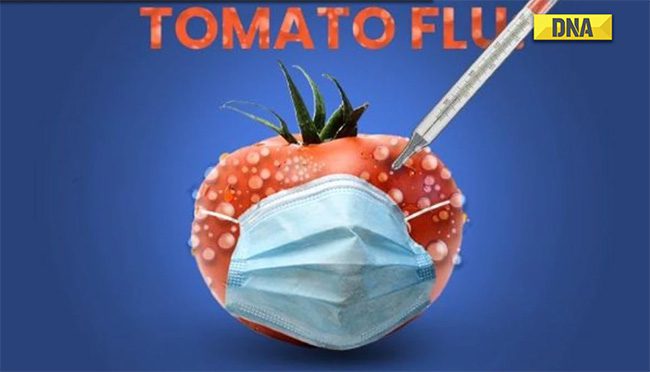Tomato Flu: No Vaccine or Treatment Available, Symptoms Similar to Hand, Foot, and Mouth Disease.
India has reported cases of a mysterious virus known as Tomato Flu, which has been silently spreading since May. The infections primarily affect children and have been reported in several states, including Kerala, Tamil Nadu, Haryana, and Odisha. On August 23, the Union Health Ministry of India issued guidelines for the prevention, testing, and treatment of Tomato Flu infections.
What is Tomato Flu?
Tomato Flu is characterized by symptoms such as fever, joint pain, and red rashes resembling the color of tomatoes, commonly seen in children under 5 years old. These symptoms are accompanied by manifestations of viral fever, including diarrhea, dehydration, nausea, vomiting, and fatigue.
Tomato Flu is believed to be a consequence of dengue fever and chikungunya, which are commonly found in the Kerala region. However, researchers currently believe it is a variant of hand, foot, and mouth disease caused by viruses such as Coxsackievirus A-6 and A-16.

Tomato Flu has some atypical manifestations.
“Tomato Flu may be a result of chikungunya or dengue fever in children rather than a new viral infection. It may also represent a new form of hand, foot, and mouth disease caused by a virus, a common infectious disease in children aged one to five and in adults with compromised immune systems,” the report in The Lancet states.
Ekta Gupta, a professor of virology at the Institute of Liver and Biliary Sciences, noted: “Hand, foot, and mouth disease is not a new infectious disease. It occasionally appears nationwide, but it is not common.”
Why is India Reporting More Cases of Tomato Flu?
According to Professor Gupta, the public is paying attention to Tomato Flu due to the many new infectious diseases reported this year. She believes that after the COVID-19 pandemic, the public and experts have become more vigilant about emerging viruses.
She explained that typically, many diseases have limited spread, so doctors do not test for them.
“There are many types of viral infections in children, but we cannot and do not need to test for every type of virus. However, we are currently recording more new cases because the number of viral tests has increased over the past five years at clinics across the country. The pandemic has also spurred this activity,” Professor Gupta explained.
Differences Between Tomato Flu and Other Childhood Infectious Diseases
According to Dr. Asawathyraj, a scientist at the Advanced Virology Institute, Tomato Flu has some atypical manifestations. The red rashes resembling tomatoes are limited to the mouth (tongue, gums, and inside the cheeks), palms, and soles. Some children may also experience rashes on their buttocks and nail loss.
Dr. Asawathyraj also mentioned that the rashes can be visually distinguished from monkeypox. “The rashes in monkeypox are deeper, and their distribution is different,” she stated.
However, the disease can be confused with hand, foot, and mouth disease. Current cases of hand, foot, and mouth disease are primarily caused by Coxsackievirus A-6 and A-16, with some cases stemming from Enterovirus 71, although this is less common.
Preventing and Treating Tomato Flu
Currently, there is no specific treatment or vaccine for this disease. However, affected children will be treated symptomatically, such as prescribing paracetamol to reduce fever.
Since the virus predominantly spreads among children, the Centers for Disease Control and Prevention recommend focusing preventive measures on this age group. According to the agency’s guidelines, suspected cases should be isolated for 5 to 7 days after symptoms appear.
Children need to be educated about the condition and advised not to hug or touch those with fever and rash. They should maintain hygiene, avoid thumb-sucking, and use tissues for runny noses.
Recommendations include isolating symptomatic children, regularly cleaning their belongings, clothes, and bedding, gargling with salt water, and washing lesions with warm water.
Local authorities need to monitor and implement response measures if an outbreak occurs. All respiratory, fecal, or cerebrospinal fluid samples (in cases of encephalitis) should be collected within 48 hours after illness onset.



















































